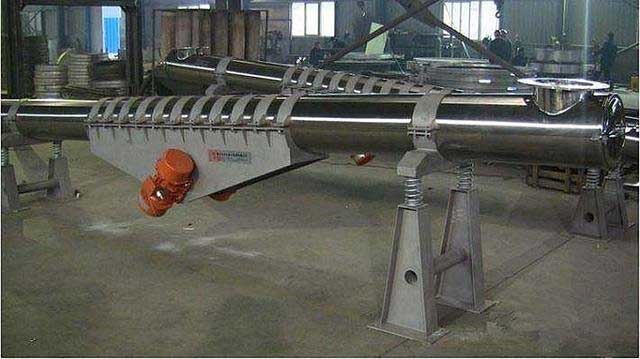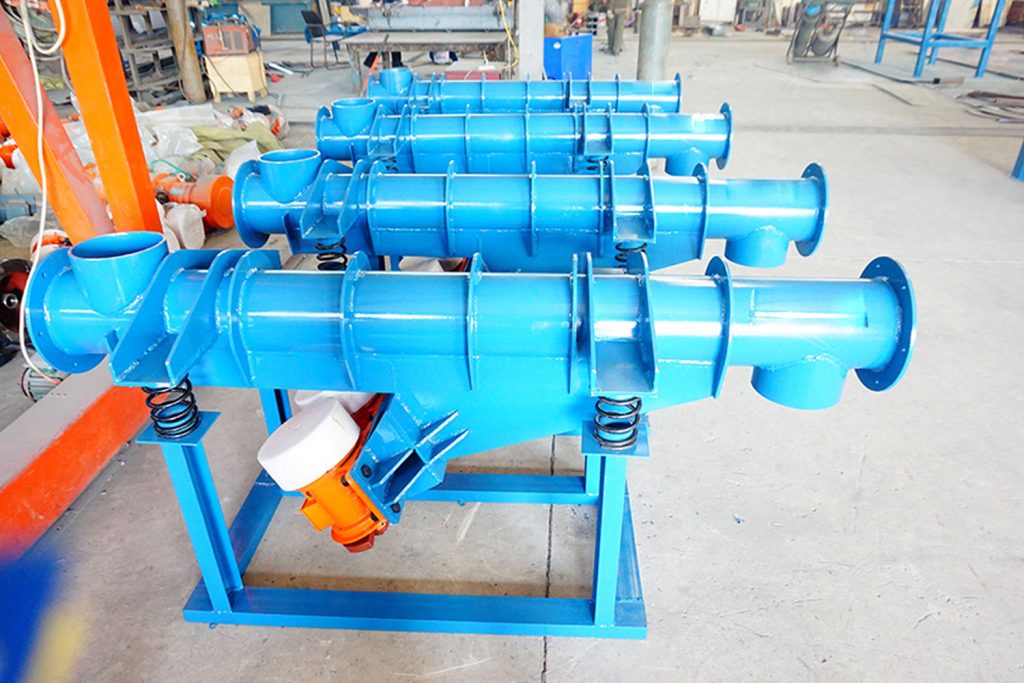
Tubular vibrating conveyor
Introduction of tubular vibrating conveyors are two types of tubular vibrating conveyors, open vibrating conveyors and closed vibrating conveyors.
The feeding and discharging of the trough of the tubular vibrating conveyor can also be made into various types such as one-point feeding, one-point discharging, one-point feeding, multi-point discharging, multi-point feeding, and one-point discharging according to the needs.
When the conveying distance of the tubular vibrating conveyor is long, multiple conveyors can be connected for conveying. The trough is supported by rubber springs or steel springs and relies on the self-synchronized operation of two vibration motors fixed on the material to make the trough vibrate linearly. The tubular vibrating conveyor works in the over-resonance area, so the amplitude is stable and the material is conveyed evenly.

Applicable industries
The tubular vibrating conveyor utilizes the vibration of the trough to quickly transport the materials in the trough from the feeding port to the discharging port.
Advantage
The tubular vibrating conveyor has the advantages of simple structure, lightweight, low noise, reliable operation, no dust pollution, convenient installation, and maintenance, etc. ZGS type tubular vibrating conveyor is widely used in metallurgy, mining, coal, building materials, chemical industry, grain, glass, ceramics, and other industries.

install and use
- The power supply of the two vibration motors of the tubular vibrating conveyor is three-phase 380V.
- Before the dry running of the tubular vibrating conveyor, check the bolts of all parts, especially whether the anchor bolts of the vibration motor of the tubular vibrating conveyor are fastened. Repeat the tightening 2-3 times.
- When the tubular vibrating conveyor is working, the rotation directions of the two vibrating motors should be opposite.
- When the tubular vibrating conveyor is running dry, check whether the operation of the vibrating conveyor is stable, and pay attention to the temperature rise of the vibration motor bearing. After 4 hours of continuous operation, the maximum temperature of the bearing shall not exceed 75 °C.

Custom Instructions
- Can be made according to user needs:
- Down-vibration tubular vibrating conveyor, the vibrating motor is placed under the conveyor;
- Up-vibration tubular vibrating conveyor: the vibrating motor is placed above the feeder;
- Speed-regulated tubular vibrating conveyor: the vibration frequency of the vibration motor can be steplessly regulated within the rated frequency range;
- Open tubular vibrating conveyor: the top of the conveyor is open, which is more suitable for the lower vibration type; Sealed tubular vibrating conveyor: The conveyor is completely sealed except for the inlet and outlet.